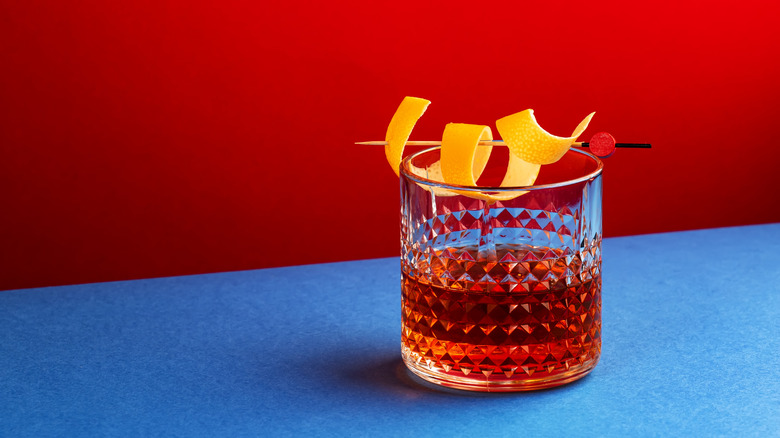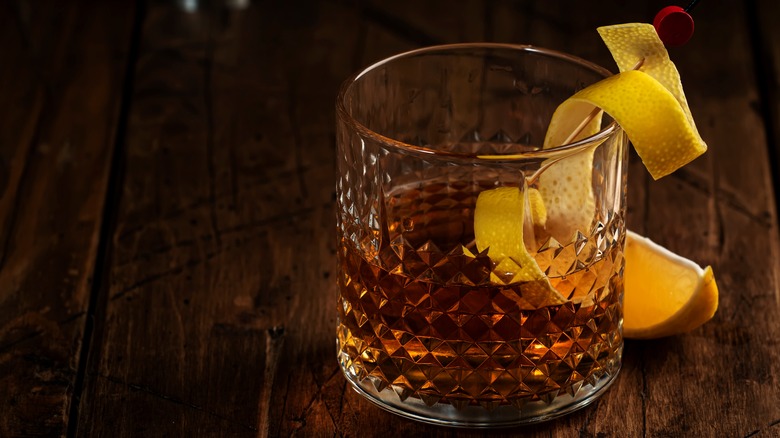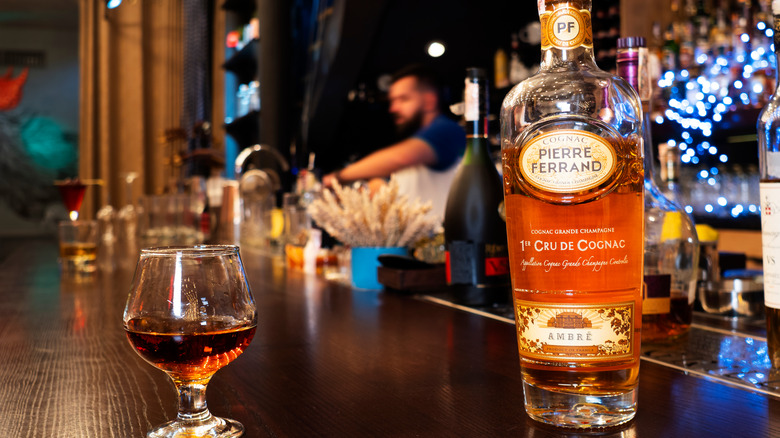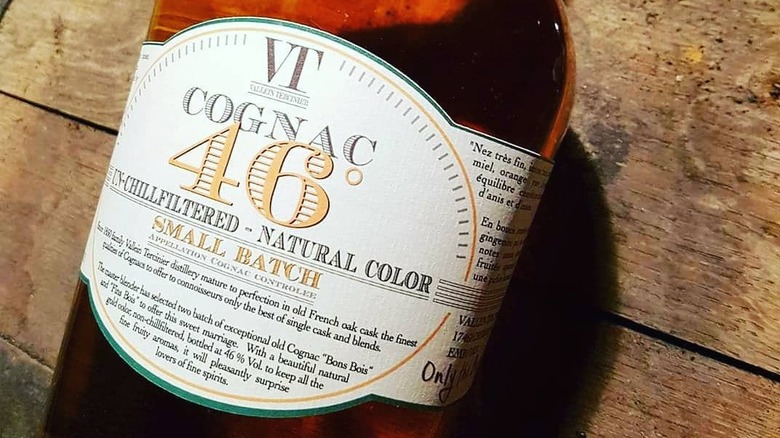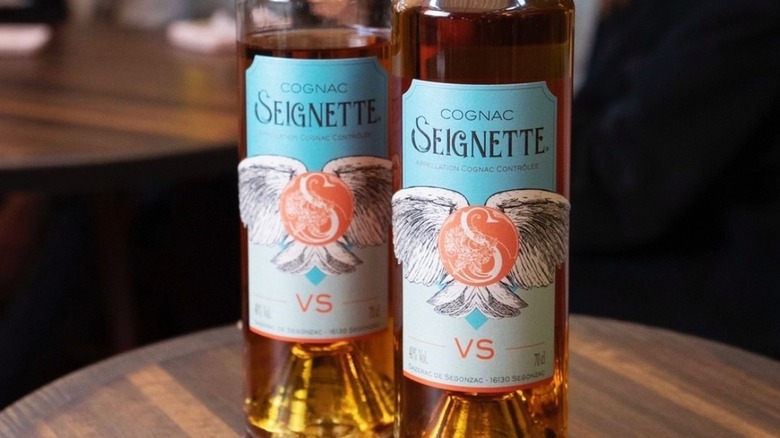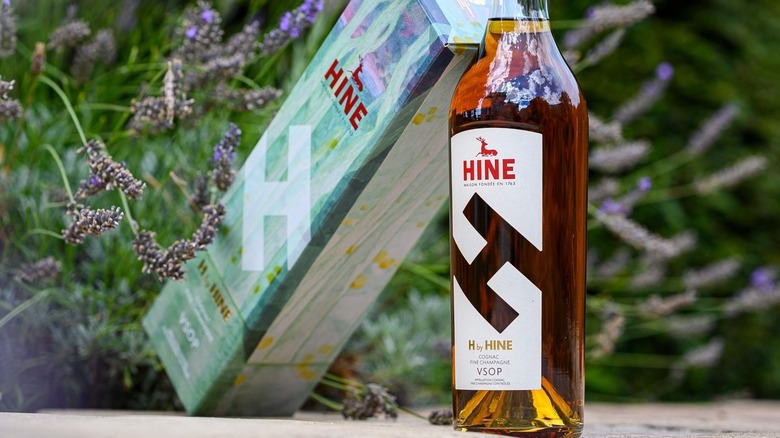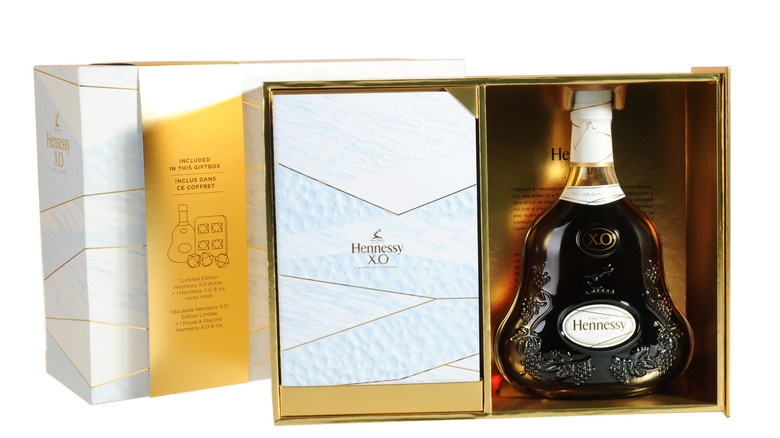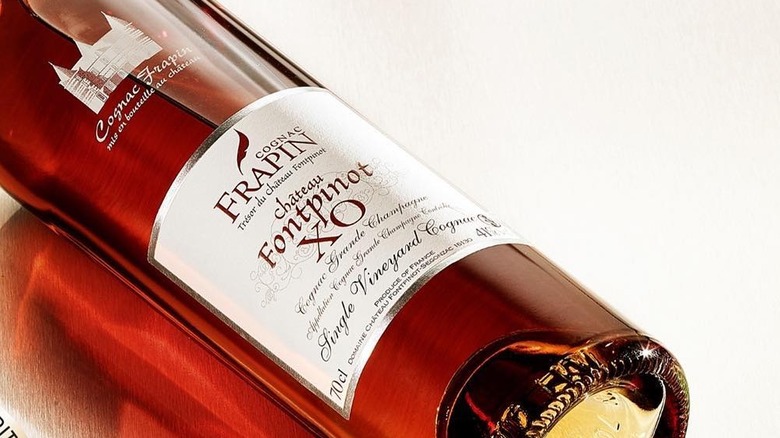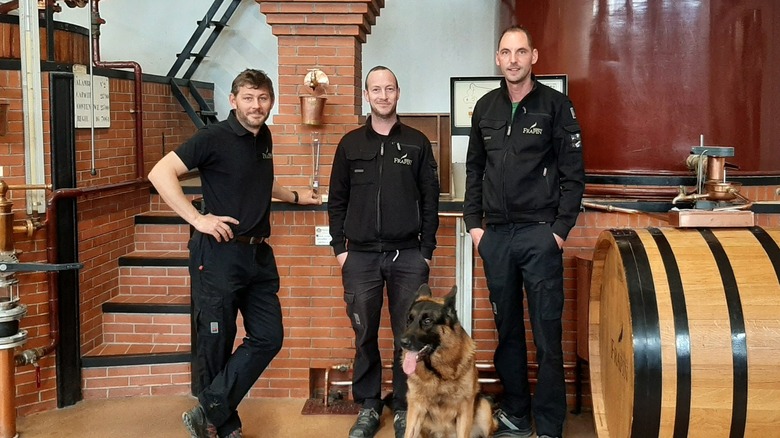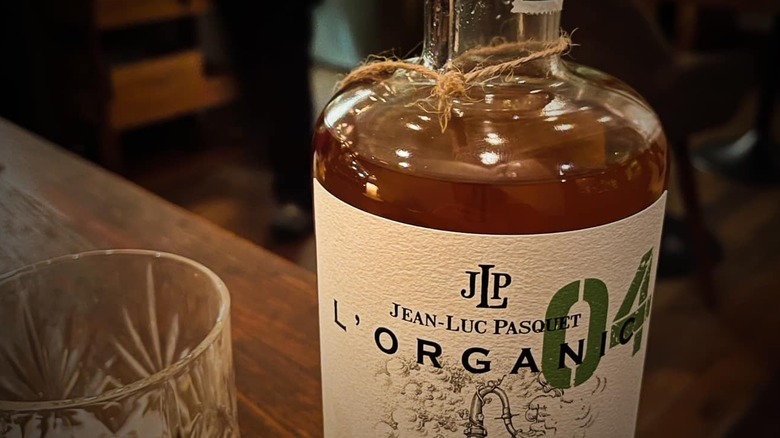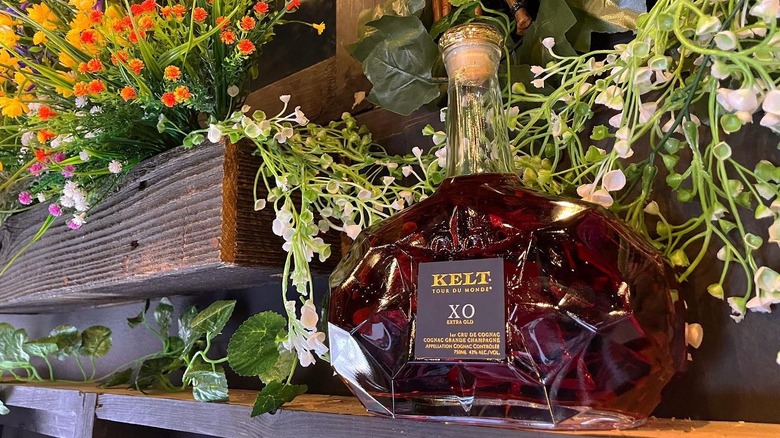10 Best Cognacs For A Sazerac
The origins of the Sazerac go back to Antoine Amédée Peychaud. Originally from Saint-Domingue (now Haiti), Peychaud was the proprietor of an apothecary at 427 Royal Street in the French Quarter of New Orleans. Sarah Malik, wine and spirit educator at Johnson & Wales University, told Tasting Table that in 1838, Peychaud apparently served his eponymous Peychaud Bitters with his favorite cognac Sazerac de Forge et Fils from Limoges, France in a small egg cup called a coquetier — a term which may have morphed into the word cocktail over time.
The drink was prepared for his customers when they were feeling a little under the weather, and the concoction was eventually crafted as a cocktail by a few mixologists in the area. We asked Malik to provide some background on this classic drink and to suggest her favorite cognacs — a brandy made from distilled white wine grapes grown in the area of Cognac in France — for various occasions and tastes. Here are ten of the best bottles to snag for your Sazerac cocktail, according to Malik.
This history of Cognac Sazerac
Malik says that the concoction was served in many bars around New Orleans, but none were as famous as The Sazerac Coffee House. "The Sazerac Coffee House was opened — though exactly when is difficult to pinpoint — around 1859, but it was noted that a mixologist called Sewell Taylor was making it in cocktails at that time," she says. In 1871, a French Quarter bartender named Thomas Handy took over the Sazerac Coffee Shop and dropped the coffee from the establishment name, and Sazerac House was born.
This was around the time that a destructive insect called phylloxera was decimating the vineyards throughout France, especially in Cognac, where wine grapes are grown for the production of this beverage. Because supplies of cognac were depleted while rye whiskey was cheaper and more abundant, cognac was commonly left out of the Sazerac in favor of rye. It is still possible to find cognac-centered Sazerac, but be sure to ask for it by name lest you end up with rye in your glass. The original recipe, according to Malik, includes Absinthe (to rinse), two ounces of cognac, three dashes of Peychaud's bitters, a sugar cube, and lemon peel for garnish.
Stick with tradition with Pierre Ferrand 1840 Original Formula Grande Champagne
According to the book "French Wine: A History" by Rod Phillips (University of California Press), the star of French brandy began to rise in the mid-1600s, demonstrated by government interest in the form of a tax. In the Charente area, the Cognac region filled a particular niche with its eponymous brandy, contributing to the rise of the distillation industry in western France. By the 1930s, Cognac entered the French appellation system along with other key wine-growing regions, defining six distinct crus.
At the apex of the cru arrangement in Cognac is the Grande Champagne (not to be confused with the Champagne region of France) where the grapes for Pierre Ferrand 1840 Original Formula Grande Champagne are cultivated. Master blender Alexandre Gabriel worked with cocktail historian and James Beard Award nominee David Wondrich to achieve the 1840 Original Formula, which is inspired by "the golden age of cognac" in the 19th century, according to the Cognac Ferrand website. For a most traditional Sazerac, with spirits crafted in the vibe of the time in which the original cocktail was conceived, this is the perfect bottle to add to your bar.
Try a small-batch producer with Vallein Tercinier Cognac 46 XO
Vallein Tercinier Cognac 46 XO is Malik's choice for a small-batch favorite. It originates in two different growing areas and age categories — 25-year-old Cognac Fins Bois, which has clay- and chalk-based soils, and 15-year-old Cognac Bons Bois, where vines are not a monoculture, surrounded by other crops and forest vegetation. In terms of mapping out the vineyard structure, picture Cognac with Grand Champagne as the core, wrapped up by the layers of the other cru including Fins Bois and Bon Bois.
The age references the time spent in oak casks before being bottled, and the label communicates this to the consumer. In this case, XO means Extra Old — at least 10 years. The blend was created by the Vallein Tercinier master blender as a limited edition, regarded as aromatic and balanced. This bottle is not chill-filtered, a technical pre-bottling practice that is used to clarify the finished product. Avoiding this method preserves the fruity aromatics, according to the producer. The number 46 represents alcohol by volume — in other words, 46%.
Get great value when you buy Paul Beau VSOP
Paul Beau VSOP is described by the producer as supple, balanced, fruit-forward, and fresh. This award-winning spirit is Malik's pick for a value-driven Cognac for your next Sazerac. VSOP means Very Superior Old Pale, aged at least four years. Like most other cognac producers, Paul Beau harvests ugni blanc grapes from the vineyard and ferments the juice which is then distilled. The finest part of the distillate, eau-de-vie, is aged in casks and then blended.
The family-owned cognac house Paul Beau is located in the commune of Segonzac and operates 100 vineyard hectares in the heart of Grande Champagne. This bottle leans on family history, a multi-generation operation dating to the 19th century. While a portion of its production is sold to the larger cognac houses, this release represents a totally estate-made product. Paul Beau has twice received the Excellence Prize at the Paris Agriculture Show. Malik says this bottle has a retail price of $62 and that many consider it to hit above its price point, with elevated XO tastes.
Try a top VS and pour Seignette
Hi-Spirits, of the US-based Sazerac Company, has come together with centuries-old producer Seignette to produce this collaborative Cognac VS, which is Malik's suggestion for a top bottle in this category. Though this product is made for a modern-day drinker, Seignette family history goes back to the 17th century when it traded cognac and salt along the western coast of France. The family crest symbolized a swan to demonstrate grace, power, and elegance, and this creature appears with wings spread on the label of this VS in tribute to heritage.
"This is produced by Sazerac, but from a family-owned house since 1804 up to that point," says Malik of this bottle, which is priced around $35. "An excellent cognac for cocktails." The letters VS mean Very Special, clocking in at two years of age. Like all cognac, this aging must happen in French oak, primarily from the Tronçais or the Limousin forests.
VSOP perfection from H by Hine VSOP Cognac
According to the producer, H by Hine "is a young cognac with a taste for adventure and originality" which matches the vibe of this old brand's fresh face for a new generation of wine and spirits consumers. Priced at around $55, Malik selects this bottle when looking for a VSOP for a Sazerac cocktail. Like all bottles that bear the VSOP indicator, this is a Very Superior Old Pale, aged at least four years.
With a long history dating back to 1763, Hine is a classic, legendary brand that has influenced many cognac drinkers, from the famous to the more discrete. In fact, Hine House was the official cognac supplier to Her Majesty Queen Elizabeth II. Hine sources all grapes from Grande Champagne and Petite Champagne cru and welcomes visitors to the distillery located in the village of Jarnac.
Hennessy XO is a popular for good reason
Hennessy XO is priced around $200 — but it's a splurge that Malik says is worth it to many people. This is down to the XO factor, which means that it is Extra Old, aged at least ten years. Hennessey is one of the most well-known cognac brands in the United States and around the world, earning the brand generations of loyal fans and customers. Recent collaborations with athletes and celebrities have brought new interest to this heritage label. Visitors can book a time to experience Maison Hennessy for a series of tours and tastings (note that remodeling is taking place which is expected to be complete by April 2023).
The original product of the house, Hennessey XO, was created by Maurice Hennessey in 1870 to share with his friends. It's known for having deep flavors and rounded candied fruit and spice notes. Often enjoyed on its own over ice, this is also a lovely upgrade to any Sazerac cocktail.
Splurge on Frapin Château Fontpinot XO
Malik says that Frapin Château Fontpinot XO is one of the best XO bottles for mixing a Sazerac as well as the ultimate splurge in the XO category. Priced around $100, this isn't the most expensive bottle on this list, so look for this release to over-deliver as a great addition to your home bar. The distiller suggests adding a drop of water to Fontpinot XO to release the aromatics, so perhaps give yourself a sip or two to compare this serving style to your Sazerac.
Maison Frapin is also a very storied old house, dating back to 1270. Its history wraps up 21 generations of the family who now own 240 hectares in the Grande Champagne cru. Frapin remains led by a family member, Jean-Pierre Cointreau, grandson of Marie Frapin. Guided tours in French and English are available to visitors at the family estate, vineyards, and distillery in the village of Segonzac.
Frapin 1270, family-owned since 1270
Frapin also earns Malik's vote for a top cognac for a Sazerac from a family-owned brand. For this category, she looks to Frapin 1270 which is the label's entry-level bottle from vineyards in the Grande Champagne area. The Franpin family dedicates this award-winning bottle to the history of the distillery and the know-how built over the generations. Thanks to a rich aromatic profile, this release is recommended for mixology as well as to be served as an aperitif or digestif.
In fact, the Frapin team offers their own Sazerac recipe: Cognac Frapin 1270, 1.5 ounces Liqueur Verveine du Velay (a local verbena liqueur), 5-6 drops of Peychaud's Bitters, 2-3 drops of water, a teaspoon of sugar, and the zest of one lemon. Aged in Limousin barrels, Frapin 1270 has rich lime blossom and soft vanilla notes on the nose and it's this aromatic richness that makes this such a satisfying element of a Sazerac.
Try Jean-Luc Pasquet 04, one of the few organic Cognacs
The Cognac region's six crus are spread throughout an area that includes Charente, Charente-Maritime, and parts of Dordogne and Deux-Sèvres. It is comprised of more than 83,000 hectares farmed by nearly 4,300 growers. Some of these farmers make their own products; others sell their grapes to larger houses; others perform a combination of both. Because of these various arrangements, different farming practices are at play throughout the vineyard landscape. Through an initiative to convert as many vineyards away from agriculture that damages the ecosystem, nearly 3,000 growers have committed to earning a dual environmental certification Cognac and HVE (High Environmental Value, a valuable sustainability certification in France).
For a 100% organic cognac, Malik suggests Jean-Luc Pasquet L'Organic 04 Cognac, a blend of 4-year-old and 5-year-old eau-de-vie. It is dry and fresh, similar in style to a younger VSOP cognac, and cultivated in the Grande Champagne cru from the Pasquet family's 7.5-hectare vineyard in the village of Éraville. In 1998, this second-generation family house earned the Agriculture Biologique certification, indicating a commitment to farming organically. Malik says that only 1% of cognac producers are organic, rendering this a totally unique taste experience.
For something super unexpected, try Kelt XO
Malik says that Kelt OX, cultivated in the vineyards of Grande Champagne, is one of the most unexpected cognacs for a Sazerac. "Kelt takes its barrels on a 90-day sea journey around the world before bottling," she says. "Kelt considers this its own essential stage of maturation which means it can offer the original taste of exported cognac."
Changes in temperature, air pressure, and the impact of the rolling sea agitating contact of the liquid with the Limousin oak are believed to offer a distinctive aging quality. "The highly regarded Kelt XO Tour du Monde (Tour of the World) shows there is a method in the madness," says Malik. The house is inspired by what they call old-world ways to create products for the modern generation. Kelt has distributors throughout the United States, making this a fascinating yet accessible cognac to add to your home bar.
